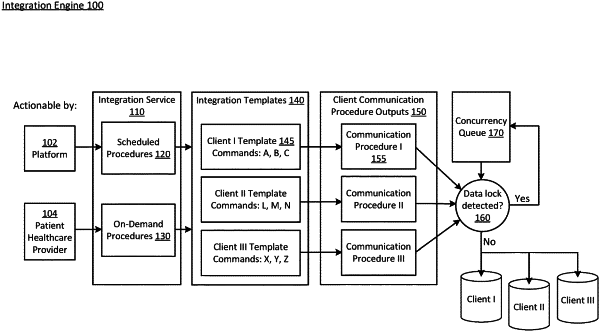| CPC G06F 16/252 (2019.01) [G06F 16/2343 (2019.01); G06F 16/258 (2019.01)] | 21 Claims |

|
1. A computer-implemented method of communicating with a plurality of databases having sets of data that may be expired, the method comprising:
maintaining a template database in an integration engine, wherein the template database stores a plurality of integration templates;
automatically initiating, based on a predetermined schedule, a communication with a database from a plurality of databases via the integration engine;
selecting, from the plurality of integration templates stored in the template database, an integration template corresponding to the database;
using the selected integration template to generate a communication procedure corresponding to the communication; and
using the communication procedure to provide the communication to the database,
wherein the integration template comprises a plurality of integration layers, wherein a first integration layer of the plurality of integration layers provides an interface to facilitate communications, a second integration layer of the plurality of integration layers provides capabilities or commands of the communication based on the respective capabilities or commands of the database, and a third integration layer of the plurality of integration layers maps and translates the communication to a format that the database is capable to interpret, wherein a data lock is implemented as a part of the communication procedure when the capabilities or commands provided by the second integration layer mark a set of data of the communication as expired data based at least in part on an age of the set of data.
|